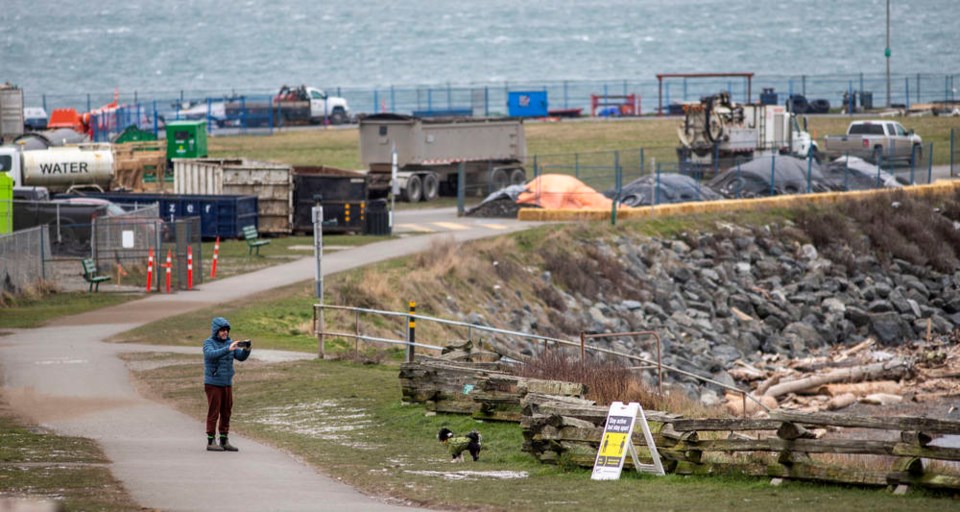Victoria city council asked staff Thursday to revise a controversial plan to close the paved loop at the southern tip of Clover Point Park and create a pedestrian-only zone with lounge chairs, food trucks, picnic tables and painted asphalt.
After getting bombarded with calls and emails from people on both sides of the issue, councillors directed Thomas Soulliere, director of parks, recreation and facilities, to come back with a range of options in hopes of finding a compromise.
“I mean there are some members of council who want cars to remain there, and there’s some members of council who don’t,” Mayor Lisa Helps said, summing up a lengthy debate. “So maybe you bring an option without cars, which you’ve done, and an option with cars, so we have something to compare and contrast.”
The 4.2-hectare park has been closed to vehicles for more than a year during expansion of the Clover Point wastewater pump station.
Soulliere had recommended closing off the loop permanently and creating a modest parking lot next to it with 17 spaces, including four accessible parking stalls and a larger drop-off and pick-up zone.
There were about 90 parking stalls in the park before the road was closed for construction.
But while many welcomed the idea of better pedestrian access to the waterfront, some seniors and people with disabilities said the changes would prevent them from sitting in their vehicles at the water’s edge to storm watch or enjoy the ocean view.
“It raises flags when something hits the public and we get 500 emails expressing concerns,” Coun. Charlayne Thornton-Joe said. “And sure, there are times where some of the concerns are misguided. … But what I found with a lot of emails that we received was that they were not form letters. Each one shared an experience or what they will be losing from these changes.”
Coun. Sarah Potts said she agreed with one writer who said council would never put a parking lot on a prime piece of waterfront property today, but she also acknowledged that many people still want to be able to park at the water’s edge.
“I think a balanced approach is needed,” she said.
A number of councillors echoed calls by some members of the public for more accessible parking spaces, though they differed on where those spots should go. Some said the number of accessible spots in the 17-stall lot should be increased, while others suggested keeping part of the loop open to cars and allowing some waterfront parking.
“The overall direction is absolutely the right one,” Coun. Geoff Young said. “This park is not balanced now between pedestrians and automobiles. It is far too automobile oriented. And I think we do need to restore the balance somewhat. But we do have to listen to what people have said.”
Soulliere said staff’s challenge will be to find that “sweet spot” that increases parking options, while still improving safety for pedestrians. Councillors noted that when the loop was open to cars it put children and people with disabilities at risk because they were forced to cut through a parking lot with vehicles pulling in or backing out.
Staff are expected to report on Feb. 25 with different options for the project.
lkines@timescolonist.com



